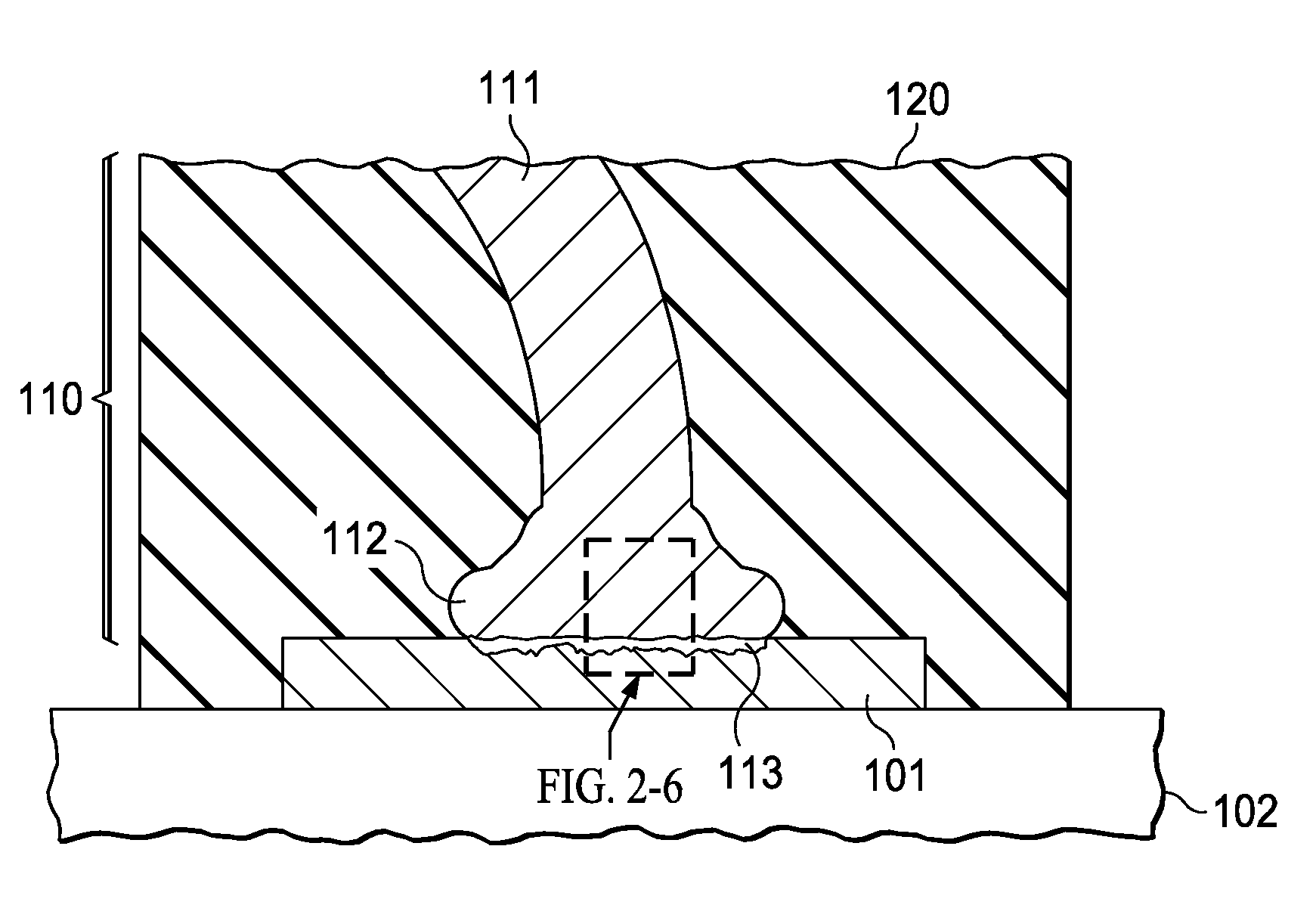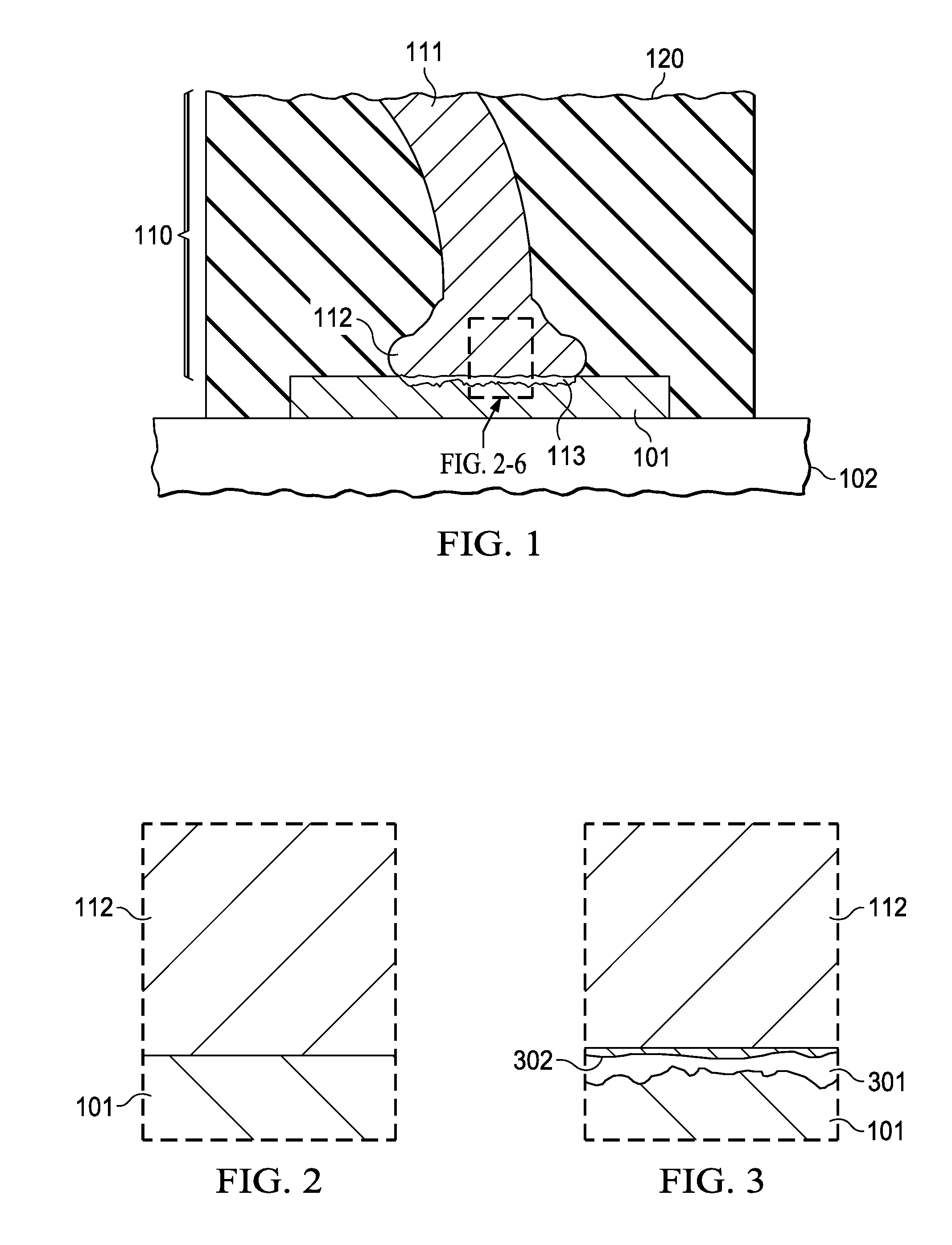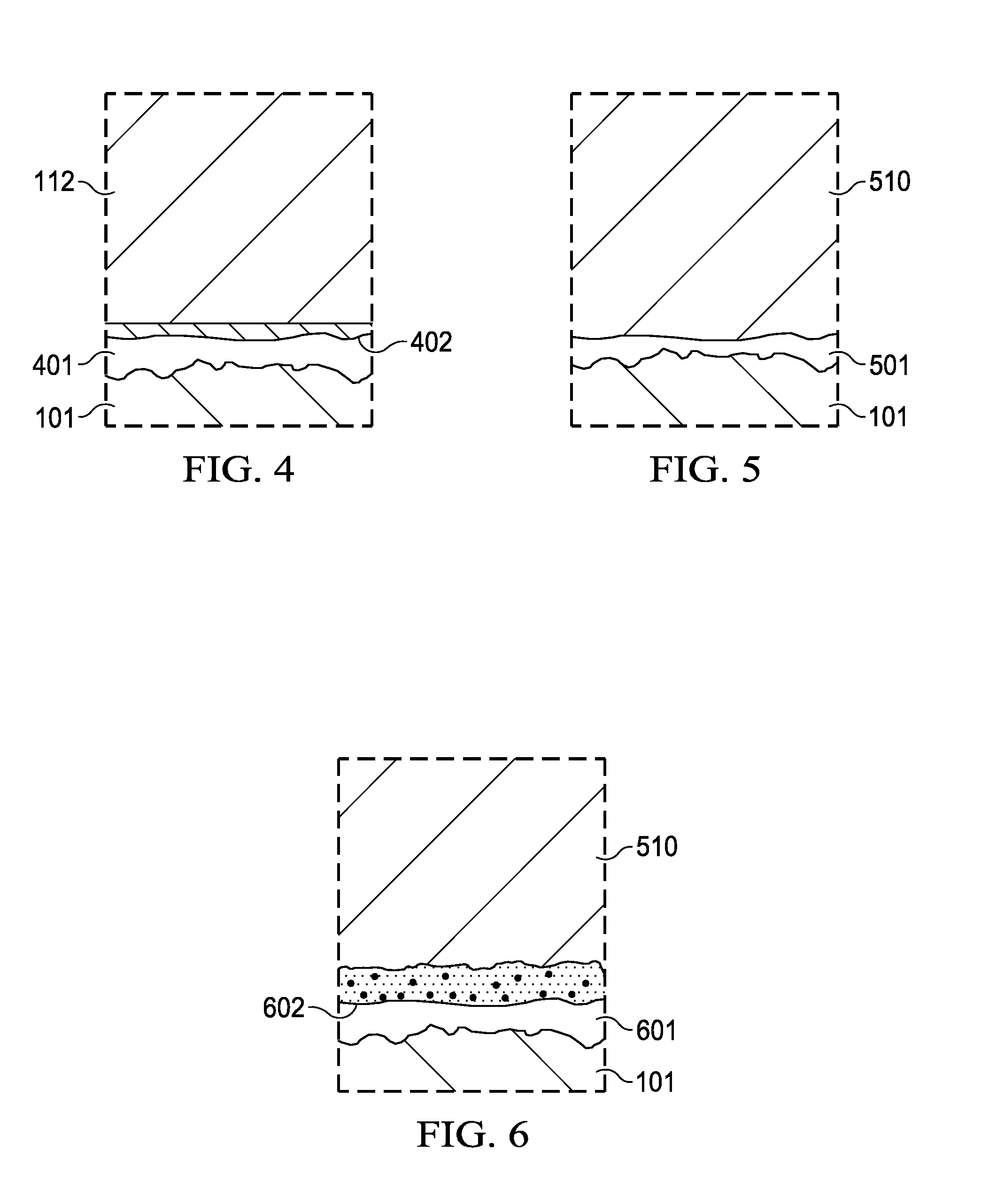Corrosion-resistant copper-to-aluminum bonds
a technology of copper-to-aluminum bonding and corrosion resistance, which is applied in the direction of semiconductor devices, semiconductor/solid-state device details, electrical apparatus, etc., can solve the problems of no grounded pin, no mal-functioning unit, and no cracking of the ball/pad interface, etc., to achieve easy implementation, high electrode potential, and easy supply by vendors
- Summary
- Abstract
- Description
- Claims
- Application Information
AI Technical Summary
Benefits of technology
Problems solved by technology
Method used
Image
Examples
Embodiment Construction
[0018]FIG. 1 displays schematically a terminal pad 101 of a semiconductor chip 102 contacted by a connecting wire 110. Terminal pad 101 is made of aluminum, often alloyed with 0.5 to 2% copper and / or 0.5 to 1% silicon. The pad is about 0.4 to 1.5 μm thick. Under the aluminum (not shown in FIG. 1) is frequently a thin layer (4 to 20 nm thick) of titanium, titanium nitride, titanium tungsten, tantalum, tantalum nitride, tantalum silicon nitride, tungsten nitride, or tungsten silicon nitride.
[0019]In FIG. 1, the connecting wire 110 includes a portion 111 of the round wire with a first diameter between about 15 to 33 μm, preferably 20 to 25 μm, and an end portion with a second diameter greater than the first diameter. Due to its shape, the end portion is often referred to as the wire nail head or the squashed wire sphere or ball. The wire consists of copper with an alloyed admixture of a noble metal such as gold or palladium. Alternative alloy options include the noble metals platinum a...
PUM
| Property | Measurement | Unit |
|---|---|---|
| thickness | aaaaa | aaaaa |
| thick | aaaaa | aaaaa |
| thick | aaaaa | aaaaa |
Abstract
Description
Claims
Application Information
 Login to View More
Login to View More - R&D
- Intellectual Property
- Life Sciences
- Materials
- Tech Scout
- Unparalleled Data Quality
- Higher Quality Content
- 60% Fewer Hallucinations
Browse by: Latest US Patents, China's latest patents, Technical Efficacy Thesaurus, Application Domain, Technology Topic, Popular Technical Reports.
© 2025 PatSnap. All rights reserved.Legal|Privacy policy|Modern Slavery Act Transparency Statement|Sitemap|About US| Contact US: help@patsnap.com



